The $5 billion National Electric Vehicle Infrastructure (NEVI) program is an important investment in the build-out of the nation’s EV charging infrastructure, but decision makers are moving forward with the same old approach. The program’s strict one-mile rule and a preference for gas stations and truck stops are a missed opportunity for investments that should prioritize flexibility, equity, and local communities.
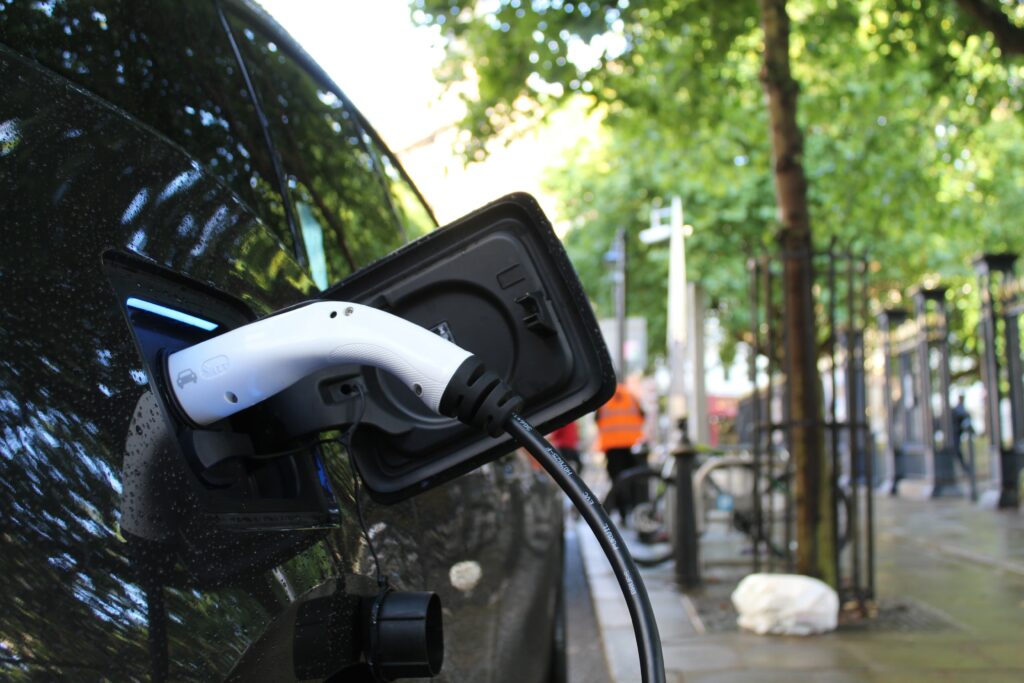
In our EV blog series, we’ll share strategies in the zero-emission fleet transition which work in concert with smart growth. These strategies can both advance the EV transition and reduce the need to drive so much. They include electric carshare services, charger-oriented development, the NEVI program, integrating smart parking policy with EV-charging, electric micromobility, and much more. Watch this space for more and go here to learn more about CHARGE, the coalition we co-lead on these issues.
Congress’s and the Biden administration’s down payment on electric vehicle charging
In a previous post in this series on transportation electrification and smart growth, we talked about the concept of charger-oriented development and argued that electric vehicle (EV) charging infrastructure should be located in vibrant places that have an abundance of diverse businesses and attractions easily accessible within walking distance. Most EV drivers will be able to charge overnight and rarely need to refuel on a trip. However, when they do need to refuel mid-trip, it takes at least 20 minutes for EV vehicles to recharge, even when using DC Fast Chargers. During that time charging or waiting for a charger, travelers will only have access to their immediate surroundings within a walkable distance. While gas stations have grown efficient at serving cars stopping for 5 minutes or less, their auto-oriented environment will leave electrified travelers, stuck in places with very little to do.
Already, surveyed EV users recognize boredom while charging as an impediment to their experience, potentially slowing their adoption. By locating new EV chargers in existing downtowns, town centers, and main streets, federal policy has the chance to align equity, local economic development, and climate goals. Siting chargers at locations built for cars, like gas stations, not only introduces quality of life concerns but also safety concerns. These sites are often poorly lit and isolated from the public eye, fostering environments that lead many people to feel unsafe.
With $7.5 billion in funding for electric vehicle chargers, the National Electric Vehicle Infrastructure (NEVI) and Charging and Fueling Infrastructure (CFI) programs represent the United States’ down payment toward a national publicly accessible EV charging network. NEVI, a new $5 billion formula program, offers $1 billion per year for states to implement their own EV Charger deployment plans. The CFI program, a smaller $2.5 billion discretionary program, was made for smaller government organizations, such as counties and cities. Half of CFI funding will go to community-based chargers, and half will go to chargers less than one mile from designated Alternative Fuel Corridor (AFC), highway routes designated for chargers.
Problematic requirements
Earlier this year, the federal government published final eligibility requirements for the NEVI and CFI programs, including rules on where NEVI chargers can be located. To be eligible for NEVI formula funding, chargers must be spaced at most 50 miles away from each other, be sited less than one mile away from an AFC, and have a minimum of four charging ports. States do not get flexibility with siting their federally funded EV Chargers until they are certified as “built out” by USDOT, meaning their entire statewide network fulfills these requirements.
Strict adherence to the one-mile rule, which prioritizes minimizing travel time to a charging site, neglects that users will spend relatively little time getting to the charger compared to the time they will spend charging. NEVI’s one-mile rule limits a state’s opportunity to place chargers in areas that could be more comfortable for users, provide sustainable local economic development benefits, and advance climate and equity goals. Unfortunately, due to guidance from the Federal Highway Administration, states are being pushed toward an approach that is highway-oriented rather than driver-oriented, let alone people-oriented.
Missed opportunities
While all states have published their NEVI deployment plans, Ohio, Pennsylvania, Colorado, and Maine are the first to provide specific locations for the initial round of federally funded EV Chargers. Hawaii has also released sites but has not finalized exact locations. Based on what these states have shared, federal requirements are already creating barriers to equitable Charger Oriented Development that supports locally-owned businesses. Approximately three out of four EV charging sites proposed in this first round of awards have gone to truck stops and gas stations.
Mahanoy City, Pennsylvania is one of many communities in the US located just outside of the NEVI program’s maximum range from the highway. Once a major coal mining town, Mahanoy City’s main street starts 2 miles west of Pennsylvania’s I-81 Alternative Fuel Corridor and has a disadvantaged census tract. The city, recognized by the state governor for its recent financial recovery, is home to dozens of small businesses and small parks along its main corridor, a newly refurbished train station, and has been recognized for its growing population.
At just a little over 2 miles away from the highway exit, this vibrant area is reasonably close to the corridor but was ineligible for federally funded chargers under the NEVI program. Instead, PADOT has so far prioritized awarding gas stations, convenience stores, truck stops, and travel centers, with little access to services other than those provided by the gas stations and convenience stores. Instead of locating the site in an area where EV users could exit their vehicles and contribute to local economies, the site that will serve this 50-mile stretch of I-81 near Mahanoy City will be located in a gas station with an attached fast food chain, at a location that the EPA’s Walkability Index defines as “least walkable,” among the lowest of all of Pennsylvania’s selected NEVI sites. On average, Pennsylvania DOT’s NEVI sites are extremely unfriendly to pedestrians with an average Walkscore of just 35 of 100.
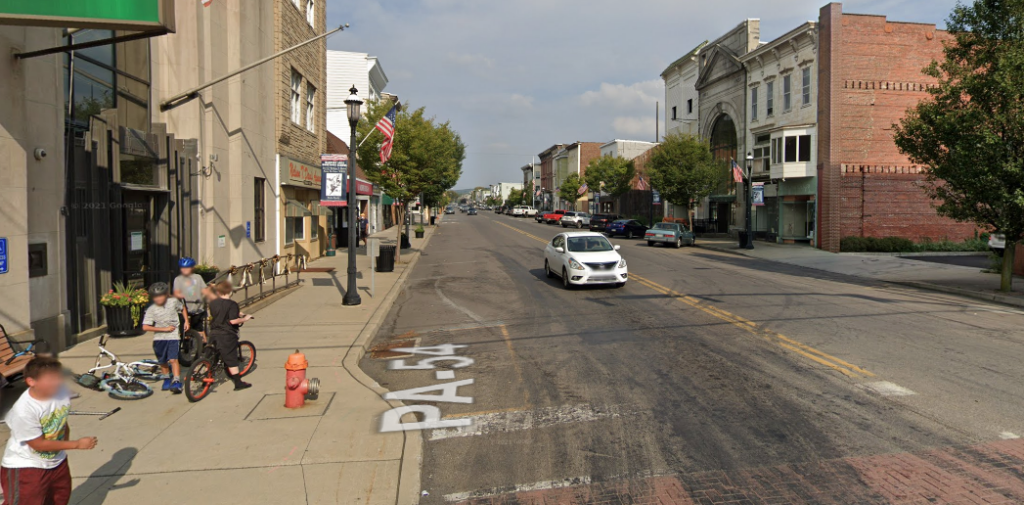
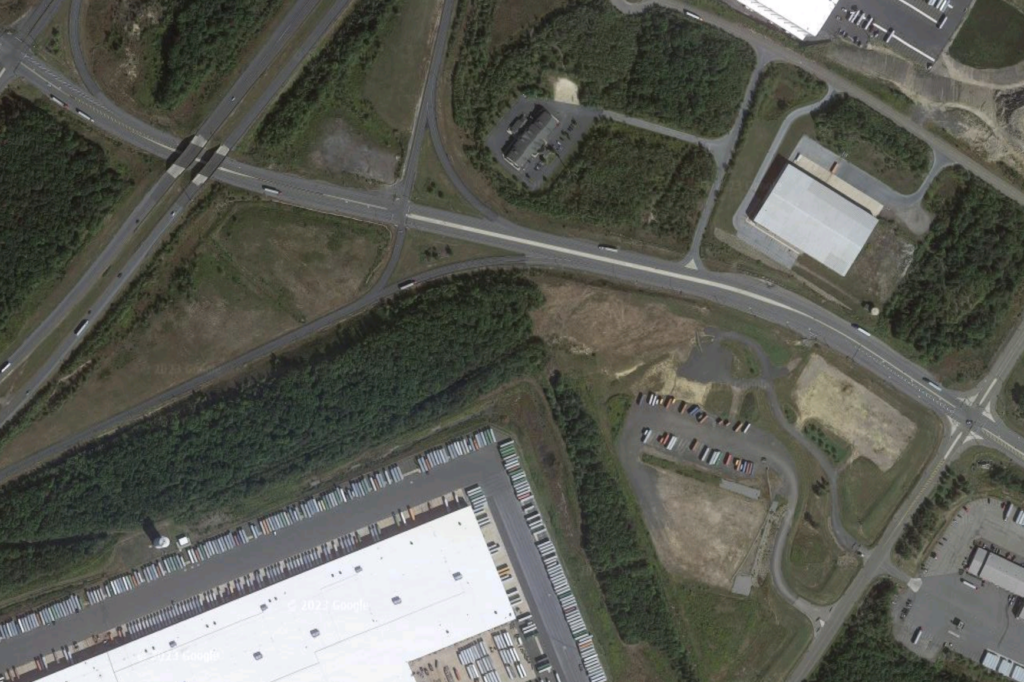
Distance from an interstate highway exit is not the only obstacle to the development of federally supported charger-oriented developments. In Ohio DOT’s NEVI plans, charger sites were identified by their proximity to amenities – but those amenities were defined as truck stops, gas stations, and big box stores. Sites near a greater number of local businesses that provide more options for travelers, such as the walkable downtown of Logan, Ohio, will be skipped over in favor of truck stops out by the highway.
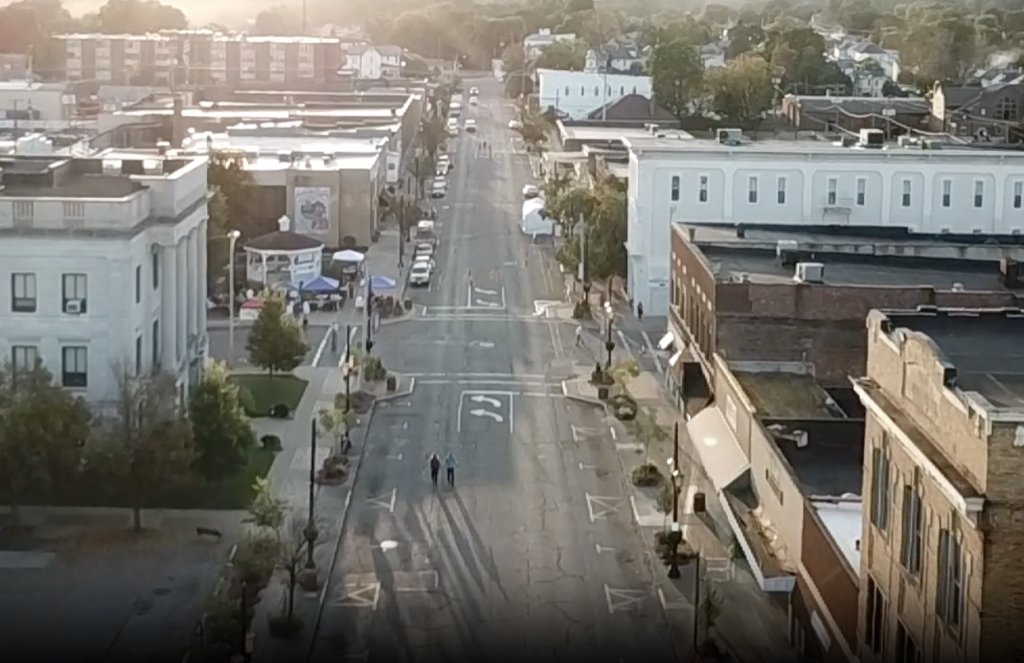
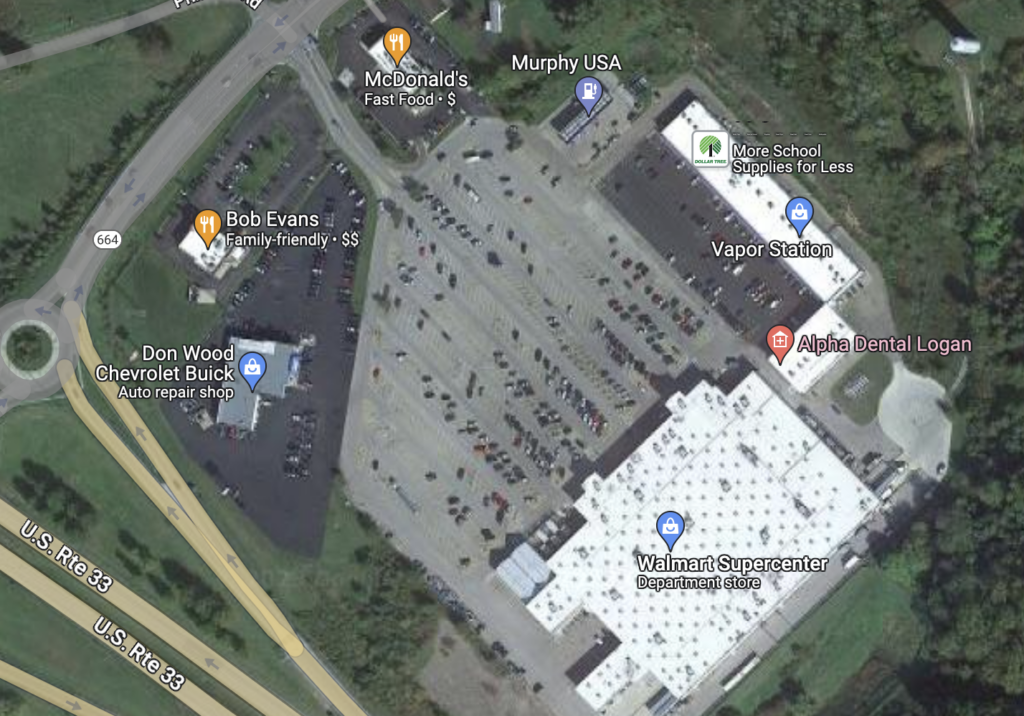
The two examples above reflect a pattern. Based on Ohio DOT’s selected sites so far, the state is not capitalizing on the unique benefits that electric vehicle chargers could confer to both drivers and local communities. On average, Ohio DOT’s Round 1 sites have a Walkscore of just 27, signaling how isolated users will be. Choices to locate these chargers in areas so dependent on cars neglect the fact that everyone is a pedestrian once they exit their vehicle. With its intense focus on alleviating range anxiety, the NEVI program is recreating a transportation system that leaves the economic benefits that these federal investments could bring to disadvantaged and rural communities off the table.
You can explore our map of states’ initial NEVI sites, along with the Walkscore, Bikescore, and Transitscore of each location below. Pennsylvania DOT, Ohio DOT, and Colorado DOT have announced a total of $64 million in funding for these sites. $47.5 million has been awarded to sites with a gas station or truck stop at the same address, reflecting a continued preference for the status quo.
Announced NEVI Sites
We color-coded each announced NEVI site according to each site’s Walkscore. Red means a Walkscore of 0-50, Yellow means 50-69, and scores of 70 and above are Green.
The Biden administration often states that the goal of the NEVI and CFI programs is to electrify the great American road trip, but the current implementation seems to forget that road trips are also about the journey, not just the destination. Providing greater flexibility in the NEVI program to promote Charger Oriented Development would be a powerful way for the administration to meet its equity goals, promote a superior travel experience, and support local economic development while building out a national charging network.
Recommendations
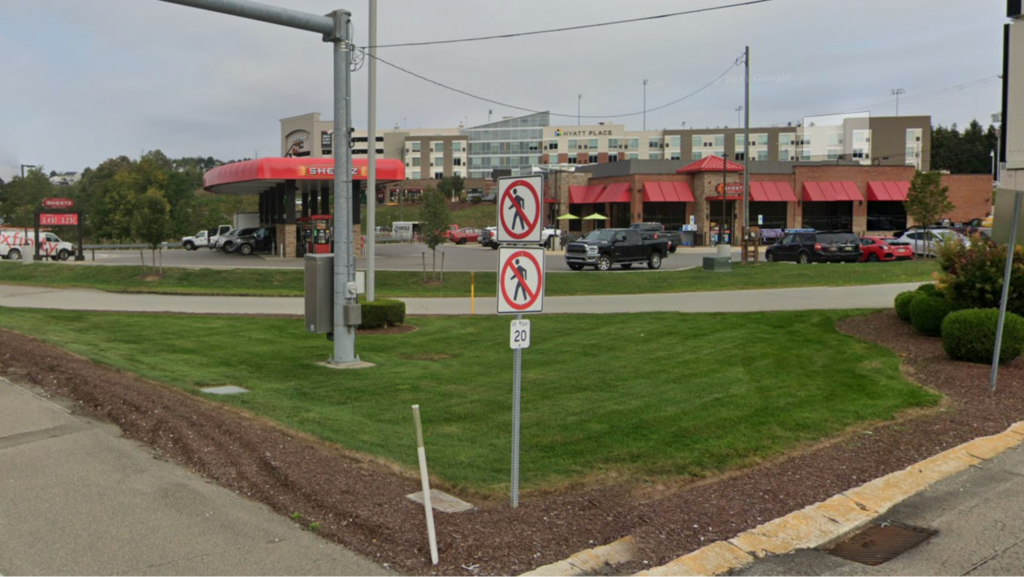
Congress can better account for the difference between charging an EV and fueling an internal combustion engine vehicle by directing the Federal Highway Administration and US Department of Transportation to loosen the one-mile requirement in the NEVI and CFI programs. This is an important opportunity for members of Congress with rural communities in their districts to make sure the EV revolution benefits their constituents. Meanwhile, the Joint Office on Energy and Transportation (JOET) should develop rules and guidance that encourage state DOTs to practice Charger Oriented Development by siting charging stations in places where travelers can access more opportunities while the car is charging.
The post NEVI stations going nowhere appeared first on Transportation For America.











